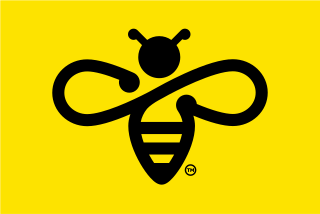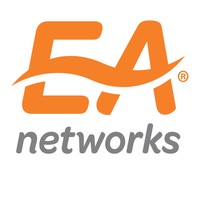
The electric power industry covers the generation, transmission, distribution and sale of electric power to the general public and industry. The commercial distribution of electric power started in 1882 when electricity was produced for electric lighting. In the 1880s and 1890s, growing economic and safety concerns lead to the regulation of the industry. What was once an expensive novelty limited to the most densely populated areas, reliable and economical electric power has become an essential aspect for normal operation of all elements of developed economies.
Meridian Energy Limited is a New Zealand electricity generator and retailer. The company generates the largest proportion of New Zealand's electricity, generating 35 percent of the country's electricity in the year ending December 2014, and is the fourth largest retailer, with 14 percent of market share in terms of customers as of December 2015.

Hydro Tasmania, known for most of its history as the Hydro-Electric Commission (HEC) or The Hydro, is the trading name of the Hydro-Electric Corporation, a Tasmanian Government business enterprise which is the predominant electricity generator in the state of Tasmania, Australia. The Hydro was originally oriented towards hydro-electricity, due to Tasmania's dramatic topography and relatively high rainfall in the central and western parts of the state. Today Hydro Tasmania operates thirty hydro-electric and one gas power station, and is a joint owner in three wind farms.

Hydro One Limited is an electricity transmission and distribution utility serving the Canadian province of Ontario. Hydro One traces its history to the early 20th century and the establishment of the Hydro-Electric Power Commission of Ontario. In October 1998, the provincial legislature passed the Energy Competition Act which restructured Ontario Hydro into separate entities responsible for electrical generation, transmission/delivery, and price management with a final goal of total privatization.

Vector Limited is an electricity and gas distribution company in Auckland, New Zealand. It is the national number one provider of electricity distribution, number one provider of electricity and gas metering and number two wholesaler of LPG. It also owns a fibre optic cable network.

Trustpower Limited is a New Zealand electricity generation and electricity retailing company, listed on the New Zealand stock exchange.

Mercury NZ Limited is a New Zealand electricity generation and electricity retailing company. All of the company's electricity generation is renewable. Mercury operates 17 power stations. In total the company has 1777 MW of generating capacity – composed of 1077 MW hydroelectric, 467 MW geothermal and 233 MW wind.
Powerco is the second-largest gas and largest electricity distributor in New Zealand. It is one of only two companies to distribute both electricity and natural gas through their network. Its network delivers electricity and gas to households around the North Island from the national electricity transmission network Transpower and the natural gas transmission system owned and operated by Vector Limited.

The Electricity Commission of New South Wales, sometimes called Elcom, was a statutory authority responsible for electricity generation and its bulk transmission throughout New South Wales, Australia. The Commission was established on 22 May 1950 by the Electricity Commission Act 1950 to take control of power generation in the State. The Commission acquired the power stations and main transmission lines of the four major supply authorities: Southern Electricity Supply, Sydney County Council, the Department of Railways and the Electric Light and Power Supply Corporation Ltd, known as the Balmain Electric Light Company, to acquire the Balmain Power Station. The Commission was responsible for the centralised co-ordination of electricity generation and transmission in the State, and some local councils continued to be distributors of electricity only.
The electricity sector in New Zealand uses mainly renewable energy; such as hydropower, geothermal power and increasingly wind energy. As of 2019, 82% of electricity is generated from renewable sources, making New Zealand one of the countries with the lowest carbon dioxide emissions from electricity generation. Electricity demand grew by an average of 2.1% per year from 1974 to 2010 but decreased by 1.2% from 2010 to 2013.

Titoki is a locality in the Mangakahia Valley of the Northland Region of New Zealand's North Island. Whangarei is 26 km to the east. The Wairua River passes to the east of Titoki, and the Mangakahia River to the west. A hydroelectric plant has been operating at Wairua Falls since 1916. It was upgraded to produce 5.4 Gwh per year in 2007.
Electricity in Pakistan is generated, transmitted, distributed, and retail supplied by two vertically integrated public sector companies, Water and Power Development Authority (WAPDA) responsible for the production of hydroelectricity and supplied to the consumers by the power distribution companies (DISCOS) under the Pakistan Electric Power Company (PEPCO). Currently there are 11 distribution companies and one National Transmission And Dispatch Company (NTDC) all in the public sector, and the Karachi Electric (K-Electric) for the city of Karachi and its surrounding areas. There are around 42 independent power producers (IPPs) that contribute significantly in electricity generation in Pakistan.

Marlborough Lines Limited is an electricity distribution company, based in Blenheim, New Zealand. Marlborough Lines is responsible for subtransmission and distribution of electricity to approximately 25,400 customers in the Marlborough Region over a service area of 11,330 km2 (4,370 sq mi). The network includes approximately 3,400 km (2,100 mi) of power lines extending to some very isolated areas across the region, including the extremities of the Marlborough Sounds, which can only be reached by boat or helicopter.
Wellington Electricity Lines Limited is an electricity distribution company, based in Wellington, New Zealand.

Electricity Ashburton Limited, trading as EA Networks is a co-operatively-owned electricity distribution company, based in Ashburton, New Zealand.

Unison Networks Limited (Unison) is an electricity distribution and fibre optic network company, based in Hastings, New Zealand.
Electric Kiwi is an independent online New Zealand electricity retailer.
Top Energy Limited is an electricity distribution and generation company based in Kerikeri, New Zealand. It owns and manages the electricity lines network in the Far North District of New Zealand, including Kaitaia, Kerikeri and Kaikohe. The service area covers 6,822 km2 and serves over 32,000 customers. It also owns and operates the Ngāwhā Geothermal Power Station.

The Aniwhenua power station is a hydroelectric power facility in Bay of Plenty in New Zealand located on the Rangitaiki River upstream of the Matahina Power Station. Water is drawn from behind a dam above the Aniwhenua Falls and diverted through a canal and a headpond to the power station before being discharged back into the river. The power station is named after the falls which are adjacent to the power station.

The Wairere Power Station is a hydroelectric power facility in the Waikato region in New Zealand which makes use of water from the Mokau River. Water is drawn from behind a dam above the Wairere Falls, which diverts the water through two penstocks to the Wairere Power Station, before being discharged back into the Mokau River. The station was commissioned in 1925 with the first generating unit. Three more generating units were added between 1938 and 1981 before a major refurbishment resulted in three of the units being replaced by a single generating unit in 2013-2014.











